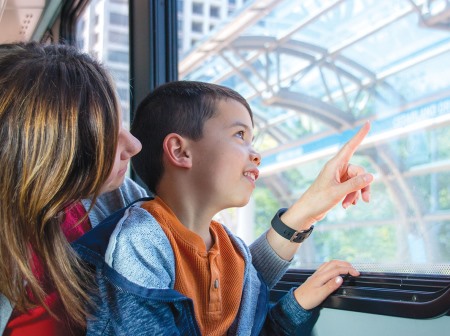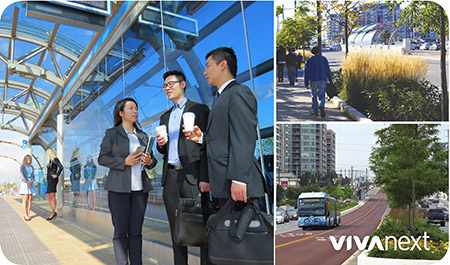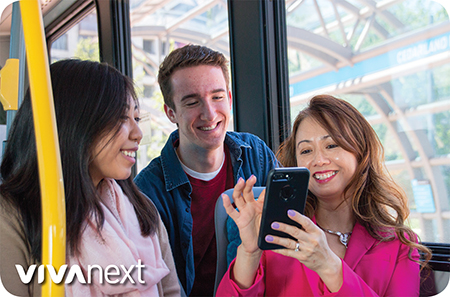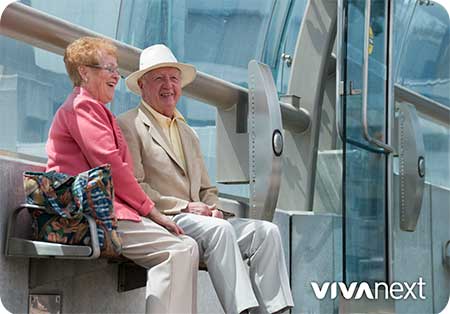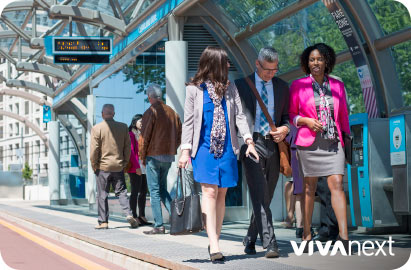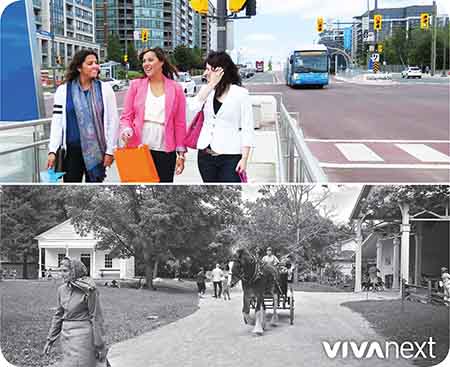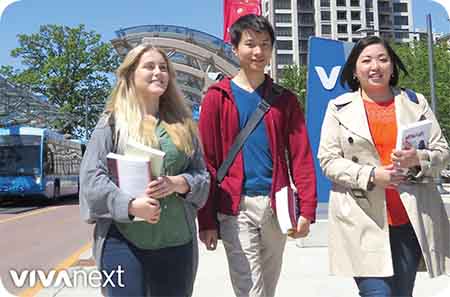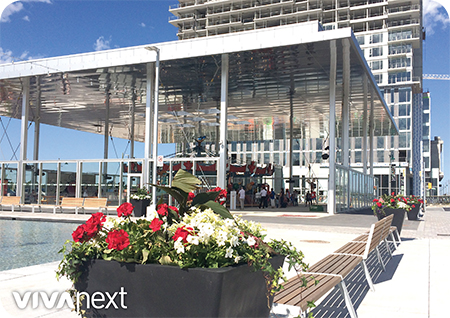If you’re walking, strolling, jogging or cycling Highway 7 West in Woodbridge, there is a new multi-use path in the centre of the road to get you across the bridge over Highway 400. Watch our new video for a bird’s-eye view and a peek at what it’s like when you’re in it.
This protected path for pedestrians and cyclists has signalized intersections at each end to enable safe crossings back to the sides of Highway 7.
Separated from traffic and transit vehicles by concrete barrier walls on either side, the multi-use path is wide enough for two-way travel. By bringing travellers away from the outside of the bridge, as well as the busy ramps of Highway 400, the new multi-use path improves regular traffic flow, and crucially for pedestrians and cyclists offers an effective, convenient solution as people make connections to and from the Vaughan Metropolitan Centre and throughout Vaughan and York Region.
While centre-road travel for cyclists and pedestrians is a new concept here in York Region, they’ve been built in the U.S. and were originally inspired by the Sands Street Bikeway in Brooklyn, NY.
Integrated with the City of Vaughan’s bike lane program and York Region’s network of bike lanes, the multi-use path connects with raised bike lanes and wider pedestrian sidewalks west of Highway 400, from Famous Avenue to Bruce Street [raised bike lanes opening in 2020], and with bike lanes already constructed on Highway 7 from Edgeley Boulevard/Interchange Way to Bowes Road/ Baldwin Avenue, as well as up Millway Avenue to the subway and the newly opened SmartCentres Place Bus Terminal in the Vaughan Metropolitan Centre.
For information about ongoing vivaNext projects, be sure to subscribe to email updates, and follow us on Twitter. Questions or comments? Comment below or email us at contactus@vivanext.com.

